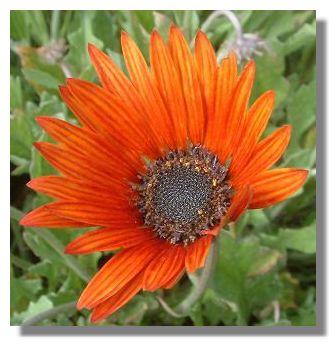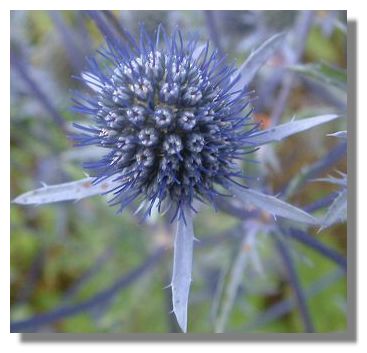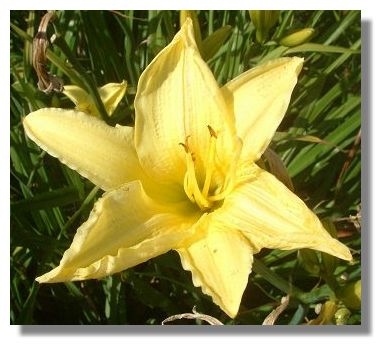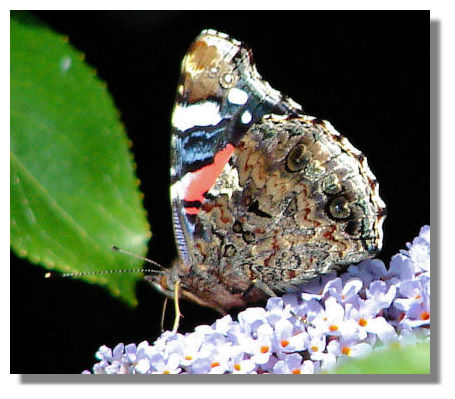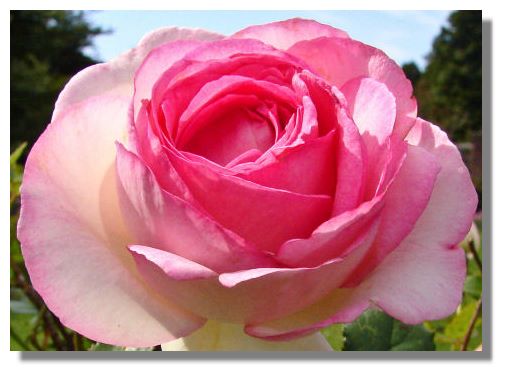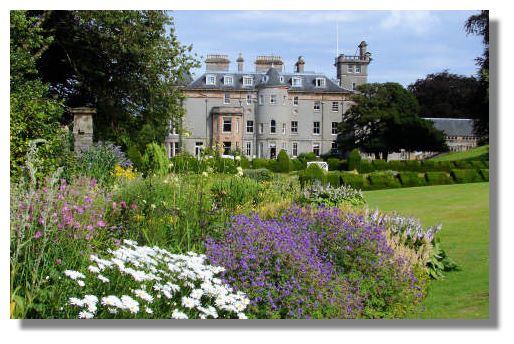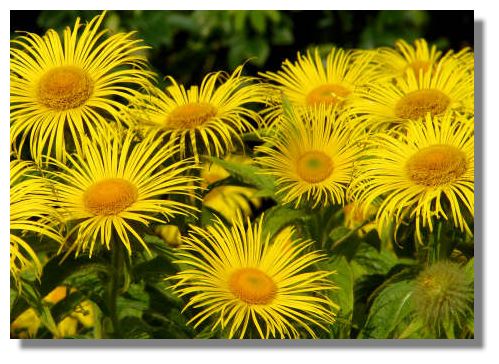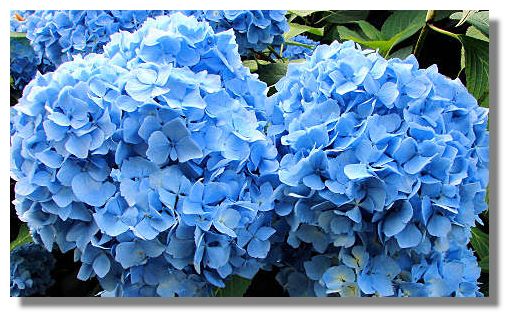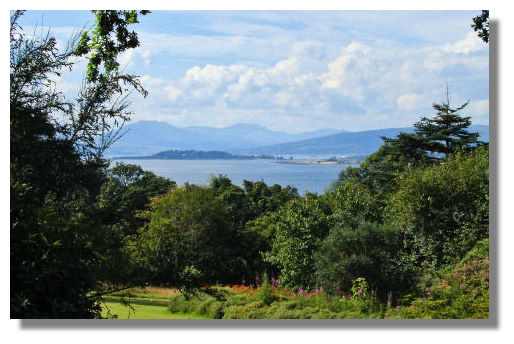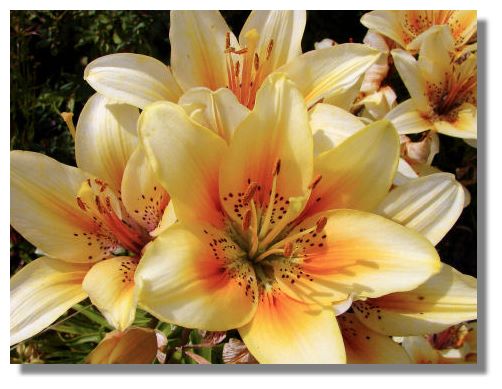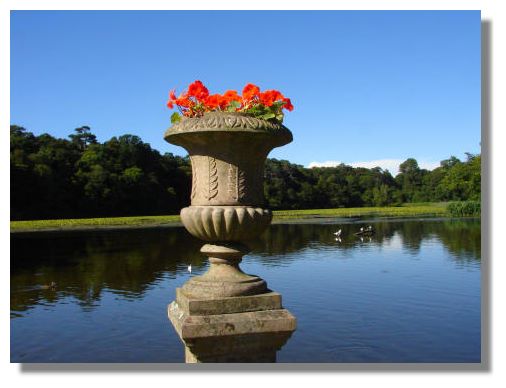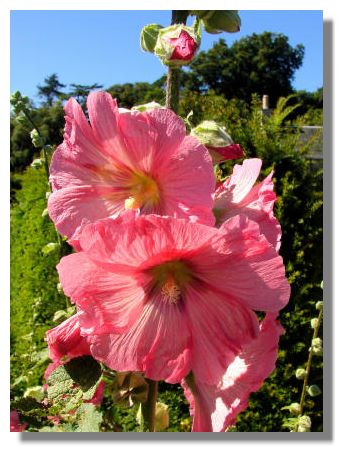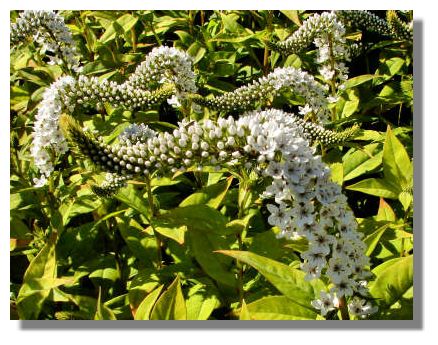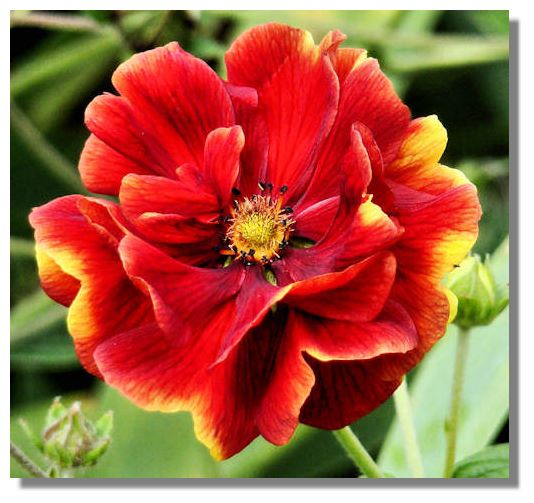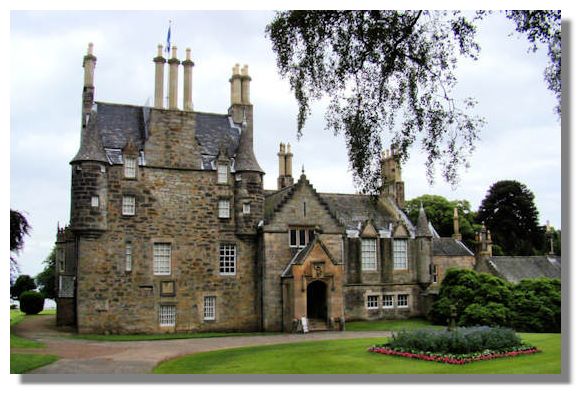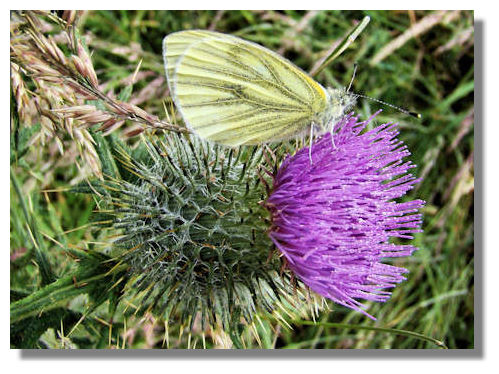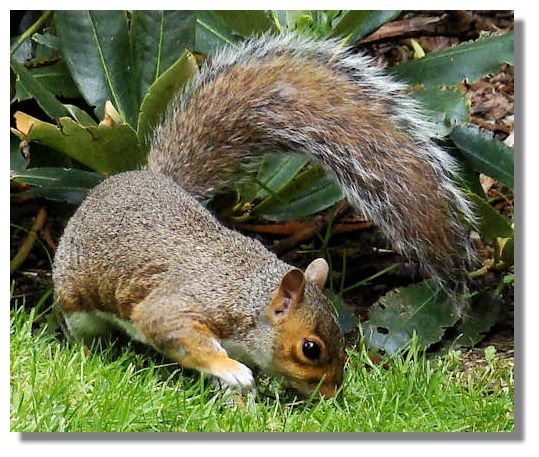Gazania or "Treasure Flower" is a native of South Africa and comes in a wide range of striking colours. It is seen at its best in bright sunshine - as here in the walled garden of Culzean Castle.
Eryngium flowers are not only a lovely shade of blue, the stems also develop the same hue. The thistle-like heads are most attractive to bees, wasps and other insects. They make excellent dried flowers for winter arrangements.
The bright flowers of Hemerocallis only last for a day. They often open in the morning and are over by the end of the day but others open in the afternoon, remain open all night and then close in the morning before withering. Fortunately, the plant produces a profusion of blooms.
This delicate plant suffers from having the unfortunate name of Scabiosa - so is often referred to by its common name of "pincushion flower".
This Red Admiral butterfly, feeding on Buddleja, one of the favourite flowers of many butterflies, refused to unfold its wings to show off the brilliant colours on its upper side. Although not nearly as bright, the colours and patterns on the under side are a more than adequate substitute, however!
This unusual rose was spotted at Finlaystone House in Renfrewshire.
Finlaystone House incorporates a 15th century castle but it was extended and remodelled in 1760 and again between 1899 and 1903. The 5th Earl of Glencairn invited John Knox to preach there in 1556. You can see an ancient yew tree in front of the house, under which Knox is said to have preached - though a later owner had the tree moved away from the house as it was blocking the light to the windows! Robert Burns, who was a friend of one of the Earls of Glencairn, also visited the house. Finlaystone is now the home of the chief of the clan MacMillan.
Another flower which is popular with butterflies is this Inula. There were a few butterflies feeding there around the time this picture was taken, but they didn't stay long enough to have their portraits taken!
The colour of the flowers on the large mop-head Hydrangeas is determined by the acidity of the soil. Intense blue ones like these are produced on acid soil but the same type of plant can produce pink flowers on neutral or alkaline soils. Red blooms are produced on strongly alkaline soil.
Although the trees block some of the view in summer, the gardens at Finlaystone offer a grand vista of the Firth of Clyde and the hills and mountains of Argyll beyond.
One of the may types of lily grown at Finlaystone.
This is a real high summer picture taken at Culzean Castle Country Park in Ayrshire. That's nasturtium growing on the top of the urn and the Swan Pond is beyond. This is home to a family of cygnets who are growing up fast.
Regular readers of this section will be aware of my interest in butterflies and other insects such as damselflies and dragonflies. So you can imagine my delight when this damselfly landed on the back of my hand! Fortunately, it was my left hand and I was able to get the camera off my right shoulder to take a few pictures of it. Despite a search of reference Web sites I have been unable to identify which kind of damselfly it is. It may even have been a newly hatched one that has yet to develop its proper colouring. That could also explain it uncharacteristically landing on my hand!
Another sign of mid-summer is when the Hollyhocks come into bloom. Growing to well over six feet - these flowers were at eye-level - it takes the plant some months to reach that height.
The proper name for this flower is "Lysimachia Clethroides" but its common name is Gooseneck Loosestrife - those arching flower spikes do look a bit like the neck of a goose.
Potentilla usually come in shades of yellow or orange, with a few pink or red, but "Gloire de Nancy" produces these double reddish orange flowers with gold tips. Common names for potentilla include cinquefoil, five-fingers, tormentil, and barren strawberry. It's often hard to know the precise variety of flowers found growing in gardens, but this one (and a number of others on this page) were photographed at the Royal Botanic Gardens in Edinburgh - where many of the plants have informative labels.
Lauriston Castle was started as a 13th century stronghold by the Napiers of Merchiston, west of Edinburgh, but it was considerably altered in the 16th century and then extended further in the 19th century to create a Jacobean-style mansion. One of the family, John Napier, was the inventor of logarithms. It now belongs to the City of Edinburgh as a public park. The sound of ghostly feet have reportedly been heard in the building....
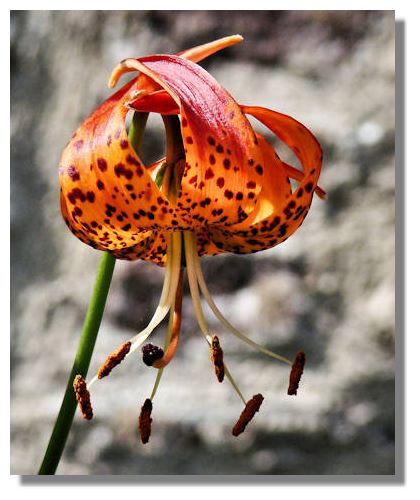
The orange flowers with purple spots and that distinctive shape are typical of the "Turk's Cap" lily. The flowers reach a height of about four feet, with large numbers of flowers on each stem, making a striking display.
There has been a notable lack of butterflies this year. The only ones I have seen in any numbers have been the so-called "Small Whites". The Green-Veined White (seen here) can usually only be identified from its distinctive under-wing markings when it is at rest.
These fluffy clusters of tiny flowers on the top of tall (over six feet) stems are Eupatorium, a popular plant in large gardens but usually too big for suburban plots. This example had plenty of space - at the back of a 540 feet long herbaceous border at the Royal Botanic Garden, Edinburgh. Eupatorium is a native of eastern USA and Eurasia.
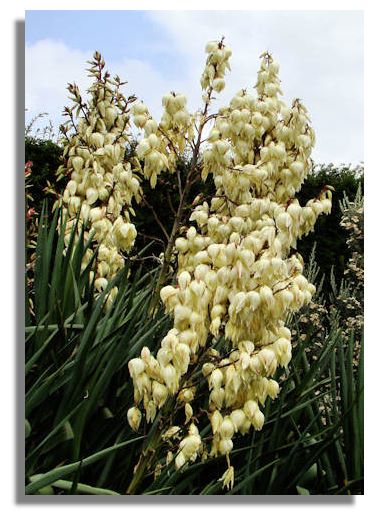
Yucca, with its long, sword-like leaves and exotic-looking flower stems which grow to 2½ feet long, look as if they would be more suitable for sunnier climates. Although originating in southern USA and Central America, there are hardy varieties which do well - such as this one here in the Royal Botanic Garden, Edinburgh.
It's sad that efforts to conserve the native red squirrel in the UK has led to a vendetta against the imported grey squirrel, which is sometimes looked upon as "vermin". The greys were imported last century from North America and proved to be more successful than the native variety. They are bolder and more resourceful and with a larger reserve of body fat, can better survive our winters.If you want to look back at other editions of these photos of Scotland week by week, there is an Index Page
